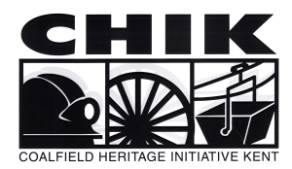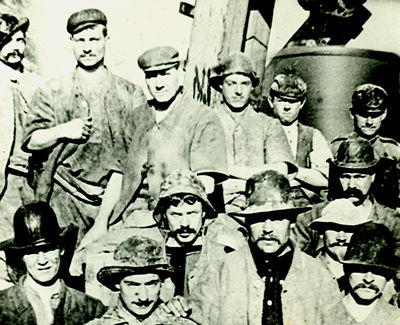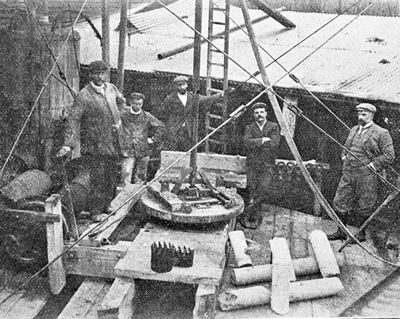The Discovery of Coal in Kent

Geologists first speculated that there was coal beneath Kent in the 1840s. It was not until the latter part of the nineteenth century however, that the theory was properly investigated.
In 1880, work began at Dover's Shakespeare Cliff on a Channel Tunnel from Dover to Calais. The idea of a Channel Tunnel had been discussed for some time but always with trepedation: the fear was the Tunnel could compromise national security. In 1882 the government halted the Channel Tunnel work while it considered the military implications.
With its workers lying idle, the Channel Tunnel Company decided to drill bore holes to investigate Kent's geology. The result was the discovery of both iron ore and coal in 1890.

Sinkers at Shakespeare cliff 1908

Coal boring at Shakespeare cliff
Shareholders of the Channel Tunnel Company declined to allow the Company to exploit the coal. The mineral rights instead went to Arthur Burr, who set up the Kent Coalfields Syndicate in 1896. Burr then proceeded to set up Shakespeare Colliery at the old tunnel workings.
Over the next twenty-five years, the Kent coalfield came close to being abandoned on numerous occasions. Over 45 test bores were carried out in east Kent and at least 10 collieries were set up. It was not until 1912, after sixteen years of continual investment, that commercial coal was raised to the surface.

Map of the Kent Coalfield
This map shows the nine collieries that survived long enough to sink shafts although only 4 would actually produce coal.
Part of the problem was that the coal was very deep underground, in thin undulating seams and was difficult to mine. There were also vast pockets of water held in the chalk greensand beds. They provided a constant stream of water into mine workings, often as high as 250 gallons (1135 litres) a minute. This taxed pumps to their limits leaving miners wading in water and in constant fear of the pumps failing. There was also a danger of flash floods, which, on occasion, killed miners and filled 1,000 feet shafts to surface level within minutes.

The Kent Coal Measures 1925
A cross-section of east Kent from Lympne on the English Channel to Margate on the North Sea. The deepest (and best) seams were over 3000 feet (915 metres) down.